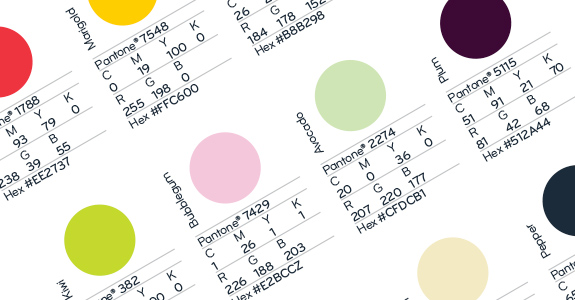I love conference bags (I hate filling them though) but usually the first thing I do when I get home is throw away the printed material. This is a bit soul destroying if you're the one who spent ages! filling the bags just to see delegates have removed half the stuff you put in into the bin. It happens though because not enough event organisers put the effort into really thinking about what goes in their bags. Quite often they're not the ones who have to fill them either, it's the volunteers who do that for them. This is a really good article on the subject and more event organisers need to start taking note of it!
Conference bags must breed in the dark. Everyone seems to have at least a dozen stuffed in the back of the closet. But they can be much more than a container for “stuff” during an event. They can be effective, desirable and memorable. Here’s how to pick a smart one and fill it with things attendees will keep, so your time and budget won’t be wasted.
A conference-event swag bag is nothing more than a hole surrounded by cloth with handles. Yet it’s one of those traditions that meeting professionals just can’t seem to leave behind. Promotional bags and products are a $19.4 billion industry.
A functional, stylish conference bag can make a strong first impression. After all, who doesn’t want cool stuff? But an ugly bag filled with lame, useless things will end up in the nearest rubbish can when no one’s looking. So sharpen up before your next event. Do not underestimate the event marketing power of the bag.
The conference bag is the first gift you give an attendee.
Make It Personal
When you hand attendees their bags, you are saying that you appreciate their attendance and this event is going to be something special. Don’t let them down. The key to improving your bags is to make them an integral part of the overall event strategy. Have a communication plan for the conference bag and solid reasons for its contents.
Set a goal that you want the bag to achieve. Just giving people a place to stash junk and office supplies is a wasted opportunity.
Communicate the strategy to workshop leaders and exhibitors. Enlist them in the plan.
Start With A Smart Bag
There are literally thousands of options at different price points. Before you select one, do this quick exercise. Think of three or four of your top clients or typical attendees.
– Would they truly want the bag you are considering?
– Why would they want to take it home after the event?
Let that be your guide. I’m not in the promotional products business, but here are some suggestions and a few free ideas from a guy who’s done decades of events:
1. Avoid any bag design that’s commonplace, boring and forgettable. Don’t make it black!
2. Think style first and marketing second. Go for attractive colors, interesting fabrics and a stylish look. Surprise attendees with the design.
3. Bigger isn’t better. Remember, attendees have to carry it around all day.
4. If you display a logo, make sure it fits the design and doesn’t look stuck on.
5. Don’t put a date on it! That makes the bag outdated the moment the event’s over.
What About Recyclable Bags?
I am 100% behind green events and managing event waste. However, you need to be careful to separate the philosophy from the marketing. Just because something is recyclable doesn’t always make it the smartest bag choice. Remember, another word for recyclable is: toss-it-before-you-leave. Is that what you really want?
Reusable is the better goal. You want to make the conference bag a part of a positive overall event experience. You want every person to see new ways to use your event bag after they get home. Here are some free ideas you can try.
Free Ideas
Have several designs. Thanks to new technology, you can have beautiful printing on your bags. Offer attendees a choice of bag. Research shows you have a better chance of the bag making it home if the person can pick the one she/he likes best.
Have the bag designed by a local artist. This makes it unique, distinctive and personal. Plus, it gives the bag a story and people will view it as exclusive.
Use logo tags instead of printing on the bag. Add colorful luggage tags with the logo. They will look better and make the conference bag more desirable. Plus, you can use several for conference sponsors.
Killer Free Idea
Use a backpack or book bag instead of traditional shopping bag or tote bag designs. I saw this at a show and it’s brilliant. Events and conferences are filled with people with children. Every child wants and needs a backpack for school, so make it your conference bag! A colorful backpack with bold graphics will be taken home and used. Your attendees will see and remember the event every day. I realize the initial cost may be higher, but no event bag is a deal if it ends up in the trash.
Fill It With Value And Not Junk
Remember, a great-looking conference bag is just half the communication strategy. Part 2 is filling it with great stuff that’s meaningful, functional and relevant.
You can and should share your conference bag strategy with sponsors and trade show exhibitors. They have their own objectives, and they will appreciate anything that makes them look and feel like a part of the big picture. You can’t control what sponsors and exhibitors give away, but you can influence them.
Take It Or Toss It
A few years ago, I asked the venue hotel to show me the trash from 20 attendee rooms after the event. It was both revealing and depressing. The trashcans were filled with conference bags, workshop materials, promotional items and the client’s $100-a-piece product demos. What I learned was there’s a giant difference between picking up something on an impulse and making the decision to take it home and use it.
The choice is Take It or Toss It. Here’s how you can decide what’s worth your time and money.

Take It
The key question every attendee asks is, “Do I need or want this?” So you have to help them to see themselves using it. Here are the top things people will keep and take home.
Attendee-specific information
Electronics
Attractive clothing
Anything for children
Toss It
You may notice this list includes some of the obvious and traditional event items. Attendees see them every time. Just how many water bottles, coffee mugs, ball caps and pens does anyone need? Here are the top things people will toss before they go home.
Printed collateral
Anything that won’t pass airport security
Super-branded items
Cheap, low-quality items
The airport security issue is important. I saw this not long ago. An event sponsor gave away souvenir bottles of hot sauce. They were fantastic – custom labeled, funny copy and made by a small company that was used as a business example in one of the general sessions. The bottles went fast! The next day at the airport I saw hundreds of bottles had been thrown away. The hot sauce was in 5 ounce bottles. In the US the largest size you can have in carry-on luggage is 3.4 ounces. The lesson is – you have to think things through.
One More Free Idea
Use conference bags to encourage early registration. Create a special swag-bag version that includes high-end items like gift cards, tickets to shows or sporting events. You know how this works. Then offer these exclusive conference bags to the first 100-500 people who register. You are building the perception that your conference bags are valuable before the event.
In Conclusion
Whether it’s the conference bag or the items you fill it with – make it matter. The conference bag is the first gift you give an attendee. It becomes personal. So make it too good to throw away. Just imagine how it could increase the image of your organization and the impact of your conference if the attendees loved your bags and considered them filled with unique, exclusive, valuable items and information?
Maximize the potential of your next bag. Make it part of your overall communication strategy and use it to support and enhance your event message. Oh, I have one more new free idea for you – Edible Conference Bags. Sounds like a winner!
Written by Andy Johnston
24th June 2014








